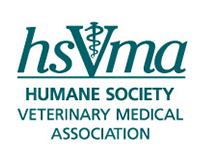|
New York Blood Center Abandons Chimpanzees |
|
Advocacy
|
|
Friday, May 29, 2015 12:20 PM |
 The chimpanzees have endured civil war in Liberia, going weeks at a time without food or water. Caregivers have risked their lives to go out to the islands to feed them, at times attracting fire from the militants. Agnes SouchalToday, the New York Times reports the New York Blood Center – an organization with hundreds of millions in assets and with rapidly increasing revenue over the last two years – has abandoned a colony of 66 chimpanzees in Liberia. NYBC exploited these chimpanzees for decades for their own profits, and has now abandoned them. Some of the chimps were captured from the wild, many were used in invasive medical research for decades and suffered during the country’s civil war when they would go weeks without food and water and lost many of their companions.
HSVMA is part of a coalition that includes The Humane Society of the United States, Humane Society International, and concerned individuals to help these chimps. Emergency funding has been sent to ensure that the chimps don’t suffer from dehydration and starvation—which is what would have happened if people didn’t respond to this crisis. Learn more on "A Humane Nation"»
|
|
Read more...
|
Guiding Principles to Ensure Access to Veterinary Care
Veterinary professionals are encouraged to sign on to show their support
As we strive to ensure that basic animal care services are available to all pet owners around the nation, low-cost veterinary clinics, spay neuter services and other non-profit organizations are helping to meet the needs of those who might otherwise go without. However, recent efforts to try to block or limit the operations of non-profit groups raise concerns about whether the nation’s neediest pets will continue to receive the care they need.
The Humane Society of the United States and HSVMA believe there is a place for both for-profit and non-profit veterinary services, and that we are stronger when we all work together towards the common goal of ensuring every pet in the United States has access to veterinary care, regardless of circumstances. We encourage every veterinary professional, whether operating in a for-profit practice, a shelter, a non-profit clinic, or any other setting, to read our Guiding Principles to Ensure Access to Veterinary Care below and sign on to show your support»
Guiding Principles to Ensure Access to Veterinary Care
More than 65% of American households have pets, the vast majority of which are considered part of the family. Veterinary care is certainly considered a necessity to properly keep a pet, and most Americans are eager to acquire these services for the pets they love. Unfortunately, veterinary care has become out of reach for many. An estimated 23 million pets live in poverty along with their human families, lacking access to veterinary care, proper nutrition and basic supplies. Even among households living above the poverty line, veterinary care can be out of reach.
In March of 2015, a diverse group of veterinarians representing private practices, non-profit clinics and animal welfare organizations came together to discuss how the veterinary profession can ensure humane care and treatment of all pets The group, listed below, agreed on the following basic principles to help guide all stakeholders:
- All animals deserve veterinary care;
- Many pets in the United States are not getting the veterinary care they need;
- Veterinarians should have the freedom to provide a spectrum of care for their patients, meaning:
- Veterinarians should have the flexibility to offer proven, effective treatments for their patients, with the understanding that those options may not involve use of the most expensive, technologically advanced or state-of the art equipment or techniques; and
- Veterinarians should be able to consider pets’ individual circumstances and their owners’ living situations when determining proper courses of treatment.
- Veterinarians should have the legal protection and professional approval to provide appropriate care to underserved animals, whether that is in for-profit or non- profit practice settings.
- Non-profit veterinary practices should not be required to limit the scope of services they provide and/or perform means testing or other income screening of clients simply because of their non-profit status.
We urge every veterinary professional to join us in supporting these principles.
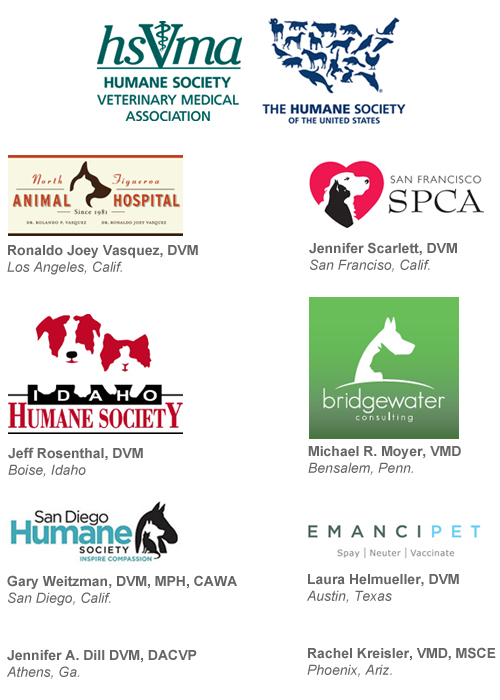

Individual Endorsers: Veterinarians
Kris Abbey, DVM
Englewood, Colo.
Kristie Adrian, DVM
San Jose, Calif.
Tina Aiken, DVM, DR. MED. VET.
Ancramdale, N.Y.
Chumkee Aziz, DVM
Davis, Calif.
Joy Baird, DVM
Sugar Land, Texas
Margaret Baird, BVMS
Woodbridge, Va.
Lisa Banks, DVM
Powhatan, Va.
Allan Barton, DVM
Georgetown, Texas
Patricia Bigwood, DVM
Detroit, Mich.
Michael Blackwell, DVM, MPH
Knoxville, Tenn.
Michelle Bouliane, DVM
Warwick, R.I.
Cierra Buer, DVM
Powell Butte, Ore.
Susan Burcham, DVM
Clinton Township, Mich.
Richie Burdeaux, DVM
State College, Pa.
Leslie Brennan, DVM
Houston, Texas
Joanne Bryla, DVM
China Grove, N.C.
Dan Campbell, DVM
Des Moines, Iowa
Staci Cannon, DVM, MPH, DACVPM
Nashville, Tenn.
Peter Campellone, DVM
Chepachet, R.I.
David Clark, DVM
Warwick, R.I.
Virginia Clarke, DVM
Virginia Clarke, Vt.
Laura Cochrane, DVM
Portland , Ore.
Lena Detar, DVM
Portland , Ore.
Rick Dill, DVM
Belle Fourche, S.D.
Stephen Dubin, VMD
Springfield, Pa.
Stacy Dudek, DVM
Woodbury, Conn.
Stephanie Eddy, DVM
Houston, Texas
Ashley Eisenback, DVM
Johnson City, Tenn.
Ann Eliopulos, DVM
San Diego, Calif.
Mary-Elizabeth Ellard, MS, DVM
Atlanta, Ga.
Elizabeth Emmel, DVM
Wheaton, Ill.
Courtney Forbes, DVM
Houston, Texas
Sarah Frei, DVM
St. Louis, Mo.
Rosangela Gebara, VM, MSC
São Paolo, Brazil
Eileen Gillen, DVM
Santa Ynez, Calif.
Carol Gillis, DVM, PHD, DACVSMR
Aiken, S.C.
Madeline Graham, DVM
Los Angeles, Calif.
Brooke Groskopf, DVM, CVA
Philadelphia, Pa.
Laurita Halbert, VMD
South Barrington, Ill.
Mary Hannah, DVM
Deerfield, Ill.
Alicia Hatch, DVM
Hattiesburg, Miss.
Zarah Hedge, DVM, MPH, DACVPM
Los Angeles, Calif.
Kevin Henderson, DVM
Topeka, Kan.
Chaya Hirsch, BVETMED
Houston, Texas
Barbara Hodges, DVM, MBA
Davis, Calif.
Melinda Hollingshead, DVM, PHD
Frederick, Md.
Thomas Holt, DVM
Crossville, Tenn.
Isis Johnson-Brown, DVM
Sherman, Miss.
Muhammad Kashif Ashraf, DVM
Johnston, Iowa
Lyndi Keizer, DVM
Wyoming, Mich.
Barry Kellogg, VMD
North Port, Fla.
Victoria Klibanoff, DVM
Eureka, Ill.
Teri Kidd, DVM
Rehoboth, Mass.
Kendra Kimberley, DVM
Las Vegas, Nev.
Bela Kisamov, DVM
Oakland, Calif.
Paula Kislak, DVM
Santa Barbara, Calif.
Andrew Knight, DIPECAWBM (AWSEL), DACAW, PHD, MRCVS, SFHEA University of Winchester
Winchester, U.K.
Denise Kobuszewski, DVM
Fort Worth, Texas
Susan Krebsbach, DVM
Oregon, Wis.
Kate Kuzminski, DVM
San Francisco, Calif.
Douglas Lammers, DVM
Ocala, Fla.
Lisa Last, DVM
Eugene, Ore.
Nadine Langston, DVM
Racine, Wis.
Jennifer Lynn, DVM
Pasadena, Calif.
Gillian Marsh, DVM
Rothesay, NB, Canada
Katherine McKinsey, DVM
Portland, Ore.
Susan McMillan, DVM, JD
Burlington, Vt.
Marjorie Metlitz, DVM
Mullica Hill, N.J.
Cheryl Meyers, DVM
Seattle, Wash.
Kirk Miller, DVM, DABVP (CANINE/FELINE)
Portland, Ore.
Lila Miller, DVM
New York, N.Y.
Serena Mills, DVM
Portland, Ore.
Sheri Moellinger, DVM
Hermann, Mo.
Julie Moentk, DVM
Chandler, Ariz.
Megan Mongiovi, DVM
Ann Arbor, Mich.
Carondelet Nollner, DVM
Memphis, Tenn.
Cristina Noltenius, DVM
San Antonio, Texas
Tate O'Gan, DVM
San Antonio, Texas
Victoria Olson, DVM
Westport, Mass.
Gopalan Parthasarathy, Ph.D.
Campbell, Calif.
Bharat Patel, DVM
Fairfax, Va.
Faith Perrin, DVM
Madison, N.J.
Karen Purcell, DVM
Wake Forest, N.C.
Jean Rabinowitz, DVM
Sacramento, Calif.
Gwendolen Reyes-Illg, DVM
Loveland, Colo.
Lee Roberts, DVM
Indianapolis, Ind.
Jill Roberts-Wilson, DVM
Elk Grove, Calif.
Cheryl Roth, DVM, DAAPM, DABVP (CANINE/FELINE)
Wilsonville Ore.
Ari Rozycki, DVM
San Francisco, Calif.
Lynne Sandifar, DVM
Biloxi, Miss.
Karen Schaedel, DVM
Gainesvillem Fla.
Susan Schrader, DVM
Juneau, Alaska
Monika Scott, DVM
Salinas, Calif.
Laurie Siperstein-Cook, DVM
Sacramento, Calif.
Terry Spencer, DVM MED
Gainesville, Fla.
Tara Strickler, MS, DVM
Philadelphia, Pa.
R Stuntebeck, DVM
Madison, Wis.
Alexandra Swanson, DVM
Monrovia, Calif.
Judit Szamos, DVM
Carlsbad, Calif.
Debra Teachout, DVM
Lemont, Ill.
Sherri Therrien, DVM
Belchertown, Mass.
Patricia Tithof, DVM
White, Ga.
Joseph Valese, DVM
Mount Pocono, Pa.
Brigit Villines, DVM
Decatur, Ga.
Judi Vogt, DVM
Charlotte, N.C.
Christine Wilford, DVM
Bellevue, Wash.
Deborah Wysocki, DVM
Houston, Texas
Pamela Zaber, DVM
Niskayuna, N.Y.
Amber Ziemba, DVM
Avon Lake, Ohio


Individual Endorsers: Veterinary Technicians
Tina Baker
Tucson, Ariz.
Karina Benish, RVT
Poway, Calif.
Michelle Canzano, LVT
Kent, Wash.
Sarah Jones, RVT
Brecksville, Ohio
Jeanne Mclelland, LVT, PA-C
Ann Arbor, Mich.
Mary Miceli, LVT
Lake Orion , Mich.
Jehn Mikalacki-Sublett, RVT
Oakland, Calif.
Duane Moellinger, RVT
Hermann, Mo.
Autumn Nidey, RVT
Harmony, Ind.
Chris Pope, CVT
Trego, Mont.
Neeley Searl, RVT
San Diego, Calif.
Lisa Soldato, CVT
Easthampton, Mass.


Individual Endorsers: Veterinary Assistants
Jill Burnip
Houston, Texas
Emily Martin
Lebanon, Ind.


Endorsers: Organizations
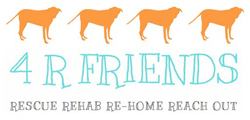 4 R Friends 4 R Friends Jean Rabinowitz, DVM Sacramento, Calif. Animal Farm Foundation Bangall, N.Y. Animal Rescue League of Iowa Dan Campbell, DVM Des Moines, Iowa  Dog and Cat Depot Dog and Cat Depot Lisa Twark, DVM Rogersville, Tenn.  International Veterinary Outreach International Veterinary Outreach Eric Eisenman, DVM Davis & San Francisco, Calif.  Operation Catnip Operation Catnip Julie Levy, DVM, PHD, DACVIM Gainesville, Fla. 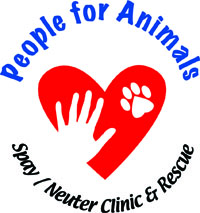 People for Animals, Inc. People for Animals, Inc. David Croman, VMD Hillside, N.J. Spay-Neuter Assistance Program, Inc. Mary Kate Lawler, DVM Houston, Texas  SpayToday, NeuterNow! SpayToday, NeuterNow! Angelina Piccoli, DVM Lakewood, Colo. 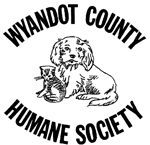 Wyandot County Humane Society Wyandot County Humane Society Ben Heydinger, DVM & Amber Weisner, DVM Upper Sandusky, Ohio
Black Sheep Veterinary Services
Rachel Cox, DVM
New Market, Iowa
Concord Parkway Animal Hospital
Stewart Roberts, DVM
Concord, N.C.
Dr. Schmid's Mobile Veterinary Practice
Ann-Marie Schmid, DVM
Franksville, Wis.
Fort Kent Animal Hospital
Christiana Yule, DVM
Fort Kent, Maine
Gaston Low-Cost Spay/Neuter Clinic
Terry Kenny, Executive Director
Gastonia, N.C.
Main Street Vet
James Williams, DVM
Madison, Wis.
Myoma Animal Hospital
Cheryl Haywood, VMD
Mars, Pa.
Serenity Animal Hospital
Karen Michalski, DVM
Sterling Heights, Mich.
Willamette Animal Guild
Bernard Robe, DVM
Eugene, Ore.
Alaska SPCA Paula Schmidt, DVM Anchorage, Alaska  Animal Friends Animal Friends Theo Nelson, DVM Pittsburgh, Pa.  Bend Veterinary Clinic, Inc. Bend Veterinary Clinic, Inc. Byron Maas, DVM Bend, Ore.  Humane Society of Charlotte Humane Society of Charlotte Sharon Bailey, DVM Charlotte, N.C.  Mockingbird Veterinary Housecalls Mockingbird Veterinary Housecalls Jennifer Douthwaite, DVM Nashville, Tenn.  Palm Springs Animal Shelter Palm Springs Animal Shelter Shayda Ahkami, DVM, Director of Shelter and Veterinary Services Palm Springs, Calif. 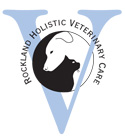 Rockland Holistic Veterinary Care Rockland Holistic Veterinary Care Sara Winikoff, DVM Blauvelt, N.Y. 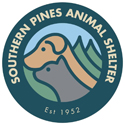 Southern Pines Animal Shelter + Spay & Neuter Clinic Southern Pines Animal Shelter + Spay & Neuter Clinic Alicia Hatch, DVM Hattiesburg , Miss.  Woods Humane Society Woods Humane Society Susan Powell, DVM San Luis Obispo, Calif.
Carson Tahoe Veterinary Hospital
David Kowalek, BVMS
Carson City, Nev.
Crystal Mountain Animal Hospital
Charles Vandermause, DVM
Austin, Texas
THE FARMACY
John Haupert, DVM, PAS
Dubuque, Iowa
Four on the Floor Veterinary Clinic
Leslye D'Ingianni, DVM
Mays Landing, N.J.
Iowa Humane Alliance
Jennifer Doll, DVM
Cedar Rapids, Iowa
M.O.M.S. Vet Clinic
Karen Detweiler, VMD
Pipersville, Pa.
Pet Savers
Tamara Boettcher, DVM
Spokane, Wash.
The Street Dog Coalition
Jon Geller, DVM
Fort Collins, Colo.

|
|
|
BREAKING: Walmart, Largest Food Seller in the U.S., Adopts Groundbreaking Animal Welfare Policy |
|
Advocacy
|
|
Friday, May 22, 2015 12:56 PM |
On behalf of the Humane Society Veterinary Medical Association's members,we applaud the decision by Walmart to change its policies with respect to animal welfare.
|
|
Read more...
|
|
Advocacy
|
Veterinary Support Needed for the PAST Act
Help End the Cruel Practice of Soring
May 21, 2015
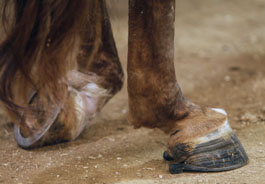 The soring of hooves and legs causes deformities that force horses to perform the exaggerated gait that is highly-sought in some show rings. Lance MurpheyLast month, the Prevent All Soring Tactics (PAST) Act, S. 1121, was re-introduced in the U.S. Senate. The PAST Act addresses the cruel practice of “soring,” which is the intentional infliction of pain to horses’ hooves and legs to force them to perform an exaggerated gait to gain an unfair advantage in the show ring. HSVMA strongly supports this bill (read our letter of support), and we encourage veterinary professionals to contact their two U.S. Senators to urge them to co-sponsor the PAST Act.
Prevent All Soring Tactics Act
The PAST Act would protect Tennessee Walking horses, Racking horses, and Spotted Saddle horses from the inhumane practice of "soring." Soring involves a variety of gruesome techniques, including caustic chemicals that burn the horses’ flesh, chains, and heavy, stacked horseshoes to accomplish this artificial gait rewarded at competitions. The PAST Act would amend the Horse Protection Act to address the industry's failed system of self-policing, ban the use of devices implicated in the practice of soring, strengthen penalties and make other reforms necessary to finally end this form of equine abuse.
The PAST Act has been endorsed by all 50 state veterinary medical associations, the AVMA, AAEP, AHC, HSVMA, horse industry professionals, and numerous animal protection organizations. In 2014, the bill had 368 co-sponsors (308-House and 60-Senate), representing a bipartisan majority of both the House and Senate.
As a veterinary professional, it's critical that your Senators hear from constituents like you regarding the welfare of horses and how important it is to treat all animals with dignity and respect.
|
|















